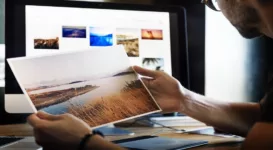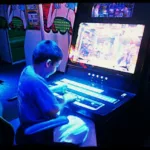One of the defining characteristics of humans is an insatiable need to create. In fact, many would argue that the innate desire to innovate and produce art is a pillar of the human experience. But despite this deep-seeded need, there has always been a gap between creating and distributing those creations for the world to enjoy and consume.
The driving force of most artists is to create, first and foremost. But the reality is, that in order to continue producing innovative work artists of all disciplines, from painting, to composing and designing, creatives need to find ways to share their work with the world and engage audiences.
The past decade has introduced an explosion of new resources all aimed at sparking creativity, and facilitating the commerce-side of creative businesses. Although technology is often pitted as the antithesis of creativity, it is actually its biggest support system. No artist or creative entrepreneur can produce within a silo; they all face the challenge of streamlining their processes, finding creative support, and distributing their work.
Champions of the creative class, have found that correctly harnessing technological resources is actually the most significant differentiator separating creatives who succeed financially, and those who fail to make a living from their work. Rather than taking over the creative process, emerging platforms and apps make it easier than ever to tailor creative experiences and endeavors to individuals, which ultimately forges deeper resonance and connections.
Today, artists have the power to speak directly to their audiences, and conversely, audiences have an increased accessibility to artists and designers which allows them to offer feedback and claim a greater stake in the end product. While the potential to expedite and infuse more personalization is exciting, many creatives also view it as daunting. Understanding how to take creative ideas to the next level and which platforms will help them best connect with the right audiences can feel like a full-time job. I’ve compiled a list of the resources that have helped my clients and me transform our work into viable businesses.
Mindly
Creatives have long been painted as the messy cousins of hyper-polished and organized analytical thinkers. While this stereotype isn’t quite accurate, there’s some truth to the perception that creatives work in chaos and disarray. As it turns out, a true creative brain is wired differently; and the traits that most share include: a penchant for disorganization, unconventionality, and openness toward risks.
While these cognitive characteristics are at the root of brilliant ideas, they don’t always help creatives bring their ideas to life in a timely, organized fashion. The Mindly app allows individuals to structure their thoughts and ideas, by creating summaries and plans of attack to support each new creative thought.
Planoly
Most creatives already recognize the power of sharing visual content via Instagram to amass new followers and build connections. But sporadically posting five photos and videos in a row, and then going dark for a month doesn’t’ help anyone build a loyal following. Tapping into social scheduling platforms, like Planoly, makes it easy to build out social content calendars and pre-schedule posts for the sake of creating a consistent cadence and social presence.
Raine Consulting
Many creative professionals are independent entrepreneurs and freelancers, and although a self-sufficient working lifestyle has its perks, it also makes it harder to learn from others and build a supportive community. As the go-to platform for creatives, Raine Magazine is committed to developing content and producing offline experiences to offer creative individuals inspiration, business education tips, insights on the latest trends and technologies impacting the creative sphere, and the chance to connect with fellow creative professionals.
For those ready to take their businesses to the next level, Raine Creative Consulting, founded by Nova Lorraine, offers tailored advice on how to leverage digital platforms to grow awareness among consumers and investors.
Despite the widespread tendency to pin creativity and technology on opposite ends of the spectrum, the two actually share a symbiotic relationship. Technological platforms need creative individuals to challenge current ideals and processes and move the needle forward.
Whereas creative professionals need technology to grow their initiatives and unlock deeper insights into consumer behaviors and preferences. The creative entrepreneurs who leverage the right tools and resources to progress their ideas are the ones who have a shot at, not only bringing their artistic ideations to fruition, but also instilling real value in people’s lives.








